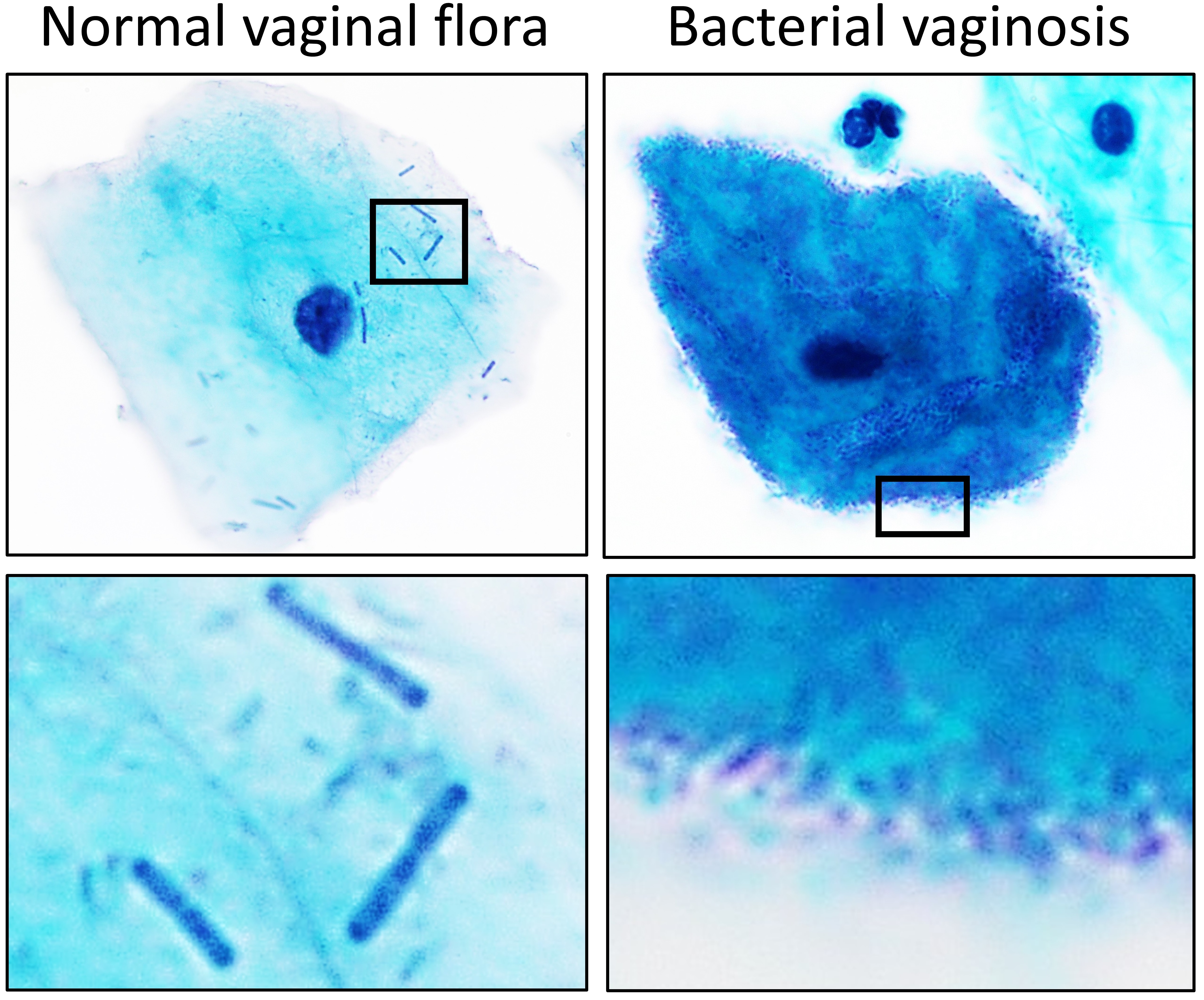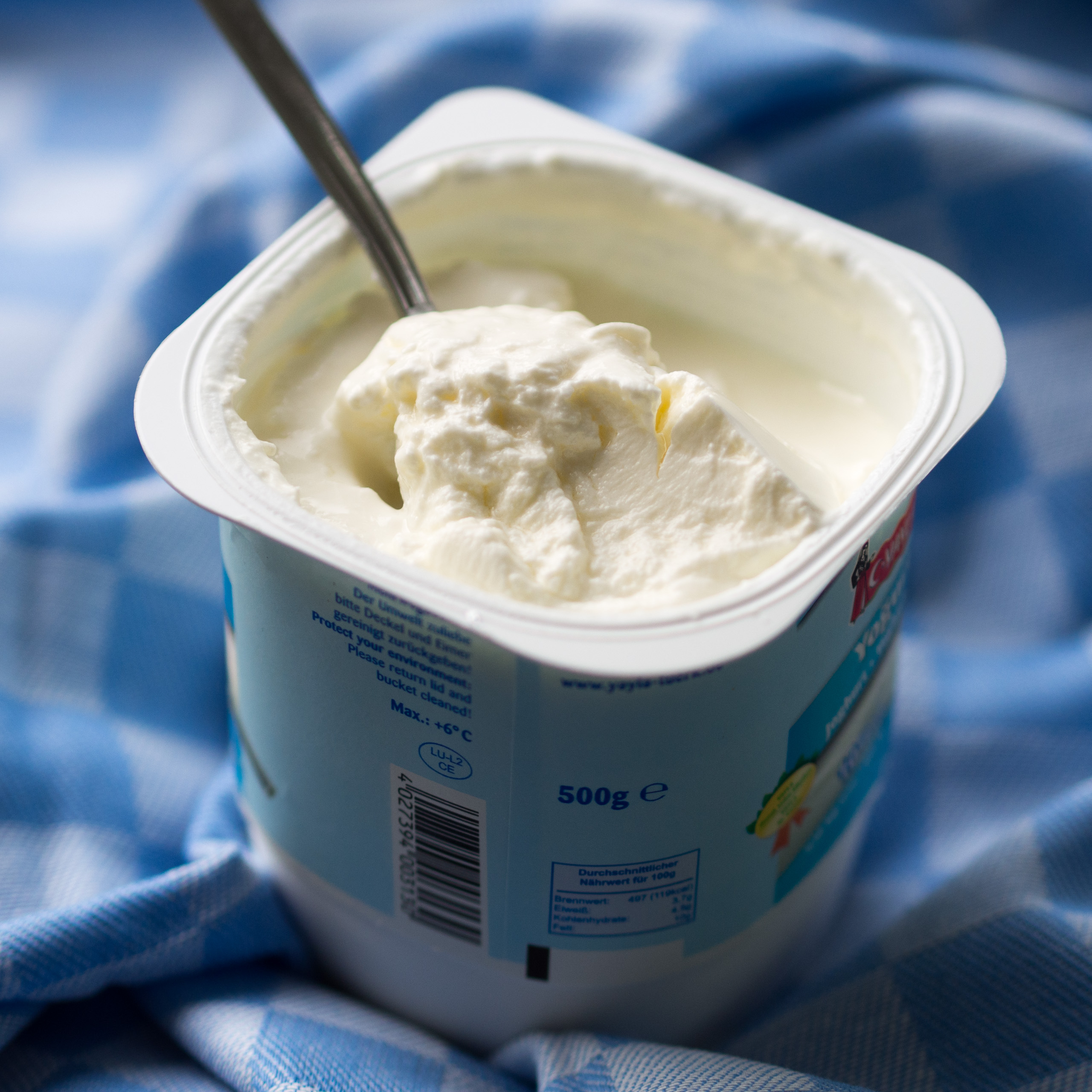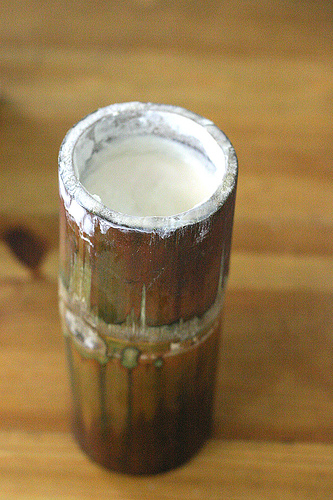|
Gherkin
A pickled cucumber – commonly known as a pickle in the United States, Canada and Australia and a gherkin ( ) in Britain, Ireland, South Africa, and New Zealand – is a usually small or miniature cucumber that has been pickled in a brine, vinegar, or other solution and left to ferment. The fermentation process is executed either by immersing the cucumbers in an acidic solution or through souring by lacto-fermentation. Pickled cucumbers are often part of mixed pickles. Historical origins It is often claimed that pickled cucumbers were first developed for workers building the Great Wall of China, though another hypothesis is that they were first made as early as 2030 BC in the Tigris Valley of Mesopotamia, using cucumbers brought originally from India. According to the New York Food Museum, archaeologists believe ancient Mesopotamians pickled food as far back as 2400 B.C. while, centuries later, cucumbers native to India were being pickled in the Tigris Valley. Ancient ... [...More Info...] [...Related Items...] OR: [Wikipedia] [Google] [Baidu] |
Cucumber
The cucumber (''Cucumis sativus'') is a widely-cultivated creeping vine plant in the family Cucurbitaceae that bears cylindrical to spherical fruits, which are used as culinary vegetables.Cucumber " ''''. 9982019. Considered an annual plant, there are three main types of cucumber—slicing, pickling, and seedless—within which several |
Pickling
Pickling is the process of food preservation, preserving or extending the shelf life of food by either Anaerobic organism, anaerobic fermentation (food), fermentation in brine or immersion in vinegar. The pickling procedure typically affects the food's texture and flavor. The resulting food is called a ''pickle'', or, if named, the name is prefaced with the word "pickled". Foods that are pickled include vegetables, fruits, mushrooms, meats, fish, dairy and eggs. Pickling solutions are typically highly acidic, with a pH of 4.6 or lower, and high in salt, preventing Enzyme, enzymes from working and micro-organisms from multiplying. Pickling can preserve Decomposition, perishable foods for months, or in some cases years. Antimicrobial herbs and spices, such as mustard seed, garlic, cinnamon or cloves, are often added. If the food contains sufficient moisture, a pickling brine may be produced simply by adding dry salt. For example, sauerkraut and Korean kimchi are produced by salti ... [...More Info...] [...Related Items...] OR: [Wikipedia] [Google] [Baidu] |
Mixed Pickles
Mixed pickles are pickles made from a variety of vegetables mixed in the same pickling process. Mixed pickles are eaten much like other pickles: in small amounts to add flavor and to accent a meal. Mixed pickles appear in many different world cuisines. In U.S. cuisine, a mixed pickle consists of vegetables and botanical fruits typically including cucumbers, cauliflower, cut large onions, and bell peppers, as well as spices like garlic, dill, allspice, and chili peppers, suspended in vinegar. Mixed pickles may also be categorized as sweet or sour depending on the addition of a sweetening agent like sugar. In British cuisine, mixed pickles typically include small whole onions, gherkins, and cauliflower. Some specific kinds of British mixed pickle are Branston pickle (more properly termed a relish), and piccalilli (the latter also found in U.S. cuisine). In Indian cuisine, a mixed Indian pickle is more likely to contain fruits (for example, mangos and limes) as well as vegeta ... [...More Info...] [...Related Items...] OR: [Wikipedia] [Google] [Baidu] |
Delicatessen
A delicatessen or deli is a grocery that sells a selection of fine, exotic, or foreign prepared foods. Delicatessens originated in Germany (contemporary spelling: ) during the 18th century and spread to the United States in the mid-19th century. European immigrants to the United States, especially Ashkenazi Jews, popularized the delicatessen in U.S. culture beginning in the late 19th century. Today, many large retail stores like supermarkets have deli sections. Etymology ''Delicatessen'' (meaning ''Delicacies'') is a German loanword which first appeared in English in the late 19th century and is the plural of . (Albeit common then, the german spelling with "c" is meanwhile dated.) The German form was lent from the French , which itself was lent from Italian , from , of which the root word is the Latin language, Latin adjective , meaning "giving pleasure, delightful, pleasing". The first U.S. short version of this word, ''deli'', came into existence probably after World War ... [...More Info...] [...Related Items...] OR: [Wikipedia] [Google] [Baidu] |
Lactobacillus
''Lactobacillus'' is a genus of gram-positive, aerotolerant anaerobes or microaerophilic, rod-shaped, non-spore-forming bacteria. Until 2020, the genus ''Lactobacillus'' comprised over 260 phylogenetically, ecologically, and metabolically diverse species; a taxonomic revision of the genus assigned lactobacilli to 25 genera (see below). ''Lactobacillus'' species constitute a significant component of the human and animal microbiota at a number of body sites, such as the digestive system and the female genital system. In women of European ancestry, ''Lactobacillus'' species are normally a major part of the vaginal microbiota. ''Lactobacillus'' forms biofilms in the vaginal and gut microbiota, allowing them to persist in harsh environmental conditions and maintain ample populations. ''Lactobacillus'' exhibits a mutualistic relationship with the human body, as it protects the host against potential invasions by pathogens, and in turn, the host provides a source of nutrients ... [...More Info...] [...Related Items...] OR: [Wikipedia] [Google] [Baidu] |
Yogurt
Yogurt (; , from , ; also spelled yoghurt, yogourt or yoghourt) is a food produced by bacterial Fermentation (food), fermentation of milk. Fermentation of sugars in the milk by these bacteria produces lactic acid, which acts on milk protein to give yogurt its texture (food), texture and characteristic tart flavor. Cow's milk is most commonly used to make yogurt. Milk from water buffalo, goats, sheep, ewes, mares, camels, and yaks is also used to produce yogurt. The milk used may be Milk#Creaming and homogenization, homogenized or not. It may be pasteurized or raw milk, raw. Each type of milk produces substantially different results. Yogurt is produced using a culture of Lactobacillus delbrueckii subsp. bulgaricus, ''Lactobacillus delbrueckii'' subsp. ''bulgaricus'' and ''Streptococcus thermophilus'' bacteria. Other Lactobacillus, lactobacilli and Bifidobacterium, bifidobacteria are sometimes added during or after culturing yogurt. Some countries require yogurt to contain a spec ... [...More Info...] [...Related Items...] OR: [Wikipedia] [Google] [Baidu] |
Fermented Milk Product
Fermented milk products or fermented dairy products, also known as cultured dairy foods, cultured dairy products, or cultured milk products, are Dairy product, dairy foods that have been made by Fermentation, fermenting milk with lactic acid bacteria such as ''Lactobacillus'', ''Lactococcus'', and ''Leuconostoc''. The fermentation process increases the shelf life of the product while enhancing its taste and improving the digestibility of its milk. There is evidence that fermented milk products have been produced since around 10,000 BC. A range of different Lactobacilli strains has been grown in laboratories allowing for many cultured milk products with different flavors and characteristics. These bacteria allow the production of many fermented milks such as cheese, yogurt, kefir, butter Most of the bacteria needed to make these product thrive under specific conditions, meaning that the right environment is crucial to the making of the fermented products. Products Many dif ... [...More Info...] [...Related Items...] OR: [Wikipedia] [Google] [Baidu] |
Sourdough
Sourdough is a type of bread that uses the fermentation by naturally occurring yeast and lactobacillus bacteria to raise the dough. In addition to leavening the bread, the fermentation process produces lactic acid, which gives the bread its distinctive sour taste and improves its keeping-qualities. History Sourdough is one of the most ancient forms of bread. It was the standard method of breadmaking for most of human history until the Middle Ages, when it was replaced by barm. Barm, in turn, was replaced in the late 19th and early 20th centuries by industrially produced baker's yeast. The ''Encyclopedia of Food Microbiology'' states: "One of the oldest sourdough breads dates from 3700 BCE and was excavated in Switzerland, but the origin of sourdough fermentation likely relates to the origin of agriculture in the Fertile Crescent and Egypt several thousand years earlier", and "Bread production relied on the use of sourdough as a leavening agent for most of human history; the ... [...More Info...] [...Related Items...] OR: [Wikipedia] [Google] [Baidu] |
Sauerkraut
Sauerkraut (; , ) is finely cut raw cabbage that has been fermented by various lactic acid bacteria. It has a long shelf life and a distinctive sour flavor, both of which result from the lactic acid formed when the bacteria ferment the sugars in the cabbage leaves. Overview and history Fermented foods have a long history in many cultures. The Roman writers Cato (in his '' De agri cultura'') and Columella (in his '' De re Rustica'') mentioned preserving cabbages and turnips with salt. According to Wilhelm Holzapfel et al, Plinius the Elder, writing in the first century A.D., is reputed to have been the first writer to describe the making of sauerkraut by preserving what the Romans called ''salt cabbage'' in earthen vessels. Popular folklore has imagined that sauerkraut was introduced to Europe by the trade networks formed across Eurasia by the Golden Horde. However, according to Mack and Surina (2005), there is no evidence to support this theory, nor any evidence that f ... [...More Info...] [...Related Items...] OR: [Wikipedia] [Google] [Baidu] |





